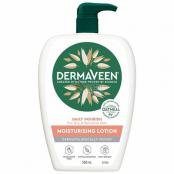What is a moisturiser?
A moisturiser is a blend or combination of substances, either naturally derived oil, cream or plant extracts that is applied to the skin through rubbing. Moisturisers are formulated with different consistencies and textures and enriched with nutritional properties.
Moisturisers work by: - Restoring the barrier function of the epidermis (the outermost layer of the skin)
- Covering tiny fissures in the skin
- Providing a soothing protective film
- Increasing water content of the epidermis
What are the benefits of using a moisturiser?
There are many different types of moisturisers and the good news is they can all benefit the skin. Moisturisers help to:
- improve the appearance of pores.
- prevent entrapment of dirt and grime on the skin surface.
- nourish the skin.
- prevent skin dehydration.
- maintain skin hydration.
- protect skin from various environmental factors.
- maintain skin elasticity thus making it feel tight and soft.
- prevent sagging of the skin.
What are the different types of moisturisers?
It has been proven by many of those who use them that moisturisers benefit their skin in many ways. However, what many of us don't know is that there are different types of moisturisers. Knowing these types will help in getting the most out of your moisturising routine. Skin type and degree of dryness of the skin will help determine the type of moisturiser that can best benefit the user.
Moisture Absorber or Humectants This type helps draw water to the skin cells and helps keep skin hydrated. It is best for dry, thick skin and will most benefit those who live in very humid climates. This type acts as a good first layer of moisture, making it suitable for all skin types. Key ingredients: Glycerin, lactic acid, urea, hyaluronic acid and alphahydroxy acid (AHAs) Works best for: Dry, thick skin in climates that are very humid. Humectants act as a good first layer of moisture and are suitable for all skin types including oily, combination and acne prone skin.
Space Fillers or Emollients This type works to fill in any spaces or gaps found in between skin cells that are missing moisturising lipids. The formulation is usually oil based but there are also some which are water based. This type helps skin become smoother and better hydrated. It is best for extremely dry and dehydrated mature skin that is in need of serious moisture. Key ingredients: Lanolin, mineral oil and petrolatum
Skin Glue or Ceramides Ceramides are naturally found in the skin. Skin that is lacking in ceramide levels is characterized by dry and damaged patches. This type of moisturiser helps replenish lost ceramide to help better retain moisture. It works best for normal and combination skin types who suffer from dryness, and those who have eczema.
Key ingredients: Ceramides
Moisture Sealers or Occlusive This type is formulated to shower the skin with moisture. Occlusive agents are rich in nature and are usually recommended for the use on the body and not much on the face. It works best for more mature skin, and skin which is dehydrated. It is not recommended for skin that is reactive or blemish prone.
What are the forms of moisturisers?
Ointment - a semi-solid grease that help hydrate the skin and prevent water loss. Petroleum jelly is the most common active ingredient. Some ointments are formulated with a small proportion of water or other ingredients that increase the ease of application. It is a very good form to help skin retain moisture but often avoided because of its greasiness.
Creams - a thick mixture that combines grease with water or another form of liquid. This is less greasy than ointment but often contain stabilisers and preservatives, making it cause skin irritation and allergic reactions in some people.
Lotion - a mixture of oil and water with water as the main ingredient. This form may not function very well as a moisturiser for individuals with dry skin because the water content evaporates quickly.
What are therapeutic moisturisers?
These are specially formulated moisturisers that help treat a specific skin condition or chronic skin problem. Examples of these conditions are: dry skin, dandruff and acne. These can either be medical prescription products or sold over-the-counter. These are meant to be used long term to allow the skin to heal.
How to choose the best moisturiser for your specific needs
Choosing the right kind of moisturiser for your skin type and specific need can be very daunting, with so many brands to choose from and so many ingredients to consider. However, no matter what skin type you are, the basic guideline in choosing the right moisturiser is: smell, feel, skin reaction and price. The truth is there is no hard and fast rule in choosing the right moisturiser. Each individual reacts differently and the only way to find out if it fits you is to try it on. But there are basic guidelines that can help in narrowing the error margins. Know your skin type and choose the right form that will best help you. Do you have dry, oily or combination skin? Do you suffer from any skin condition like eczema? By knowing this you will be able to narrow down your options. Read the label, especially the ingredients. It is best to choose a moisturiser that doubles up as a sun protection product to limit the products that you will apply. It is also best to choose a product that contains less chemicals and more natural ingredients with properties like antioxidants.
Avoid the following ingredients
- Colouring and perfume
- Too many acids
- Steroidal ingredients (specific to those with skin problems like eczema)
- Urea or lactic acids
Try it on your skin and see how your skin will react
If there is a trial product, take advantage. Try to let it stay on your skin for at least 24 hours and see how your skin will react. If it burns or causes any irritation, don't buy it.
Page updated 06/04/18 12:47:36 p.m.

























